Get Stronger Legs for Cycling: Tips and Tricks for New Senior Riders (2024)
Updated 3/18/24
Are you looking for ways to up your cycling game as an older adult?
Do you want to strengthen your legs so that you can improve your performance and endurance while riding?
We all know that cycling is a great way to build leg muscle, cardiovascular endurance, and stamina.
But did you know that building leg strength doesn’t just come from riding more?
To build strong legs, you need to include a strength training program with exercises like squats and lunges in your routine.
Adding more to your workout routine may sound grueling, but it is especially important as we age.
As we age, our muscles lose strength and mass, and the cardiovascular system becomes less efficient—isn’t that just wonderful?!
However, the good news is that regular cycling and a weight training program can help slow down and even reverse some of these changes!
So, let’s look at all the tips and tricks you need to know to boost your cycling performance to new heights.
I’ll also share specific strength exercises on and off the bike designed to make you feel stronger and turn back time.
This post contains affiliate links. As an Amazon Associate, I earn from qualifying purchases. This means I may earn a commission, at no extra cost to you, should you choose to make a purchase using my link.
Benefits of Leg Strength in Cycling
Stronger legs mean more power.
The more power you can generate with your legs, the faster you can cycle.
Also, stronger legs mean better endurance.
When your legs are strong, they can handle more stress and fatigue.
This means you’ll be able to ride longer without getting tired.
This is especially important for anyone who enjoys long-distance cycling, where endurance is key to getting to the finish line!
Exercises to Be a Better Cyclist
While getting stronger legs is important, you need to be sure to do what works for you.
Take a look at your fitness level and any physical limitations.
If you have a bad knee, ankle, or back, you need to respect that!
Find a workaround.
Consider doing only bodyweight exercises or using resistance bands instead of free weights so they don’t jar your joints.
We’re not 18 anymore, so we need to respect our bodies to avoid injury.
Don’t be afraid to back off a bit or avoid an exercise that puts more stress on your joints.
If it causes pain STOP!
Muscle discomfort would be expected, but pain is another beast.
There are many exercises for different muscles – find an alternative if needed.
Also, always start with a warm-up and end with a cool-down. Your joints and muscles will thank you for this!
Here are some simple exercises that I do:
Goblet Squat
Goblet squats are my favorite leg exercises for strengthening.
They are done with free weights, but if weights are too hard, you can ditch them and do air squats instead.
If you’re looking for something a little more challenging – you can throw a mini band or booty band above your knees for more resistance.
To do a goblet squat:
- Stand with your feet shoulder-width apart.
- Hold a dumbbell with both hands at chest level or just opt out of using weights and do it with bodyweight only.
- Begin by pushing your hips back as you bend your knees, keeping your back straight.
- Go as low as possible, then push back up through the heels to the starting position.
- Repeat for 10-15 reps.
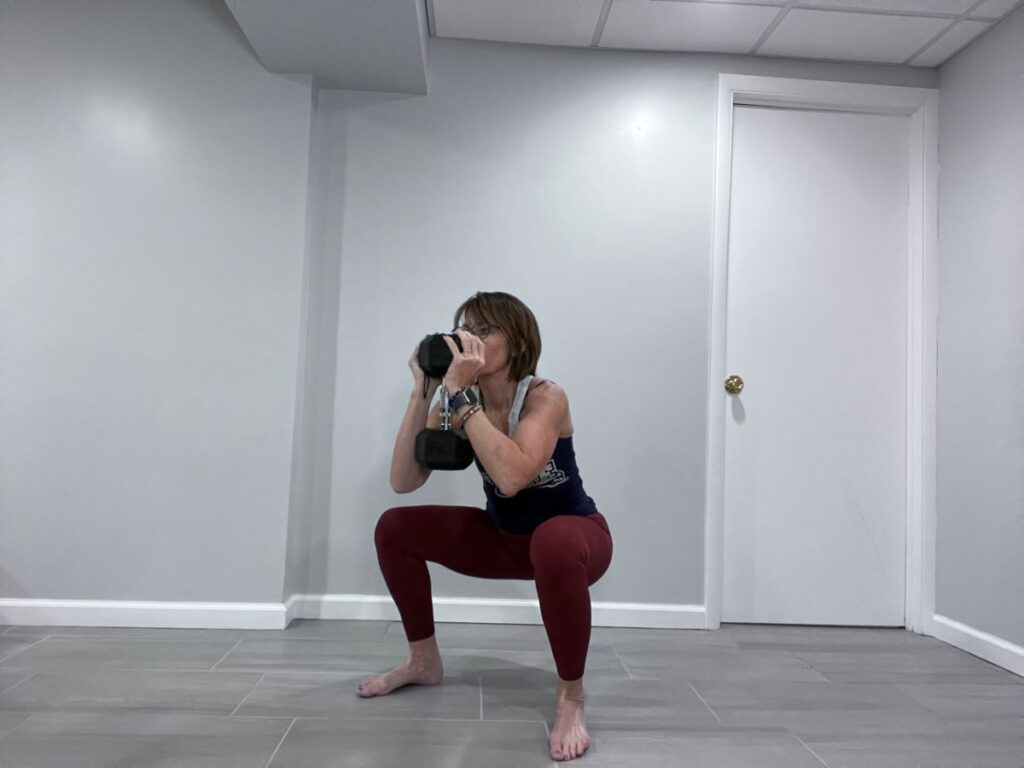
If regular squats are difficult for you, try a wall squat instead.
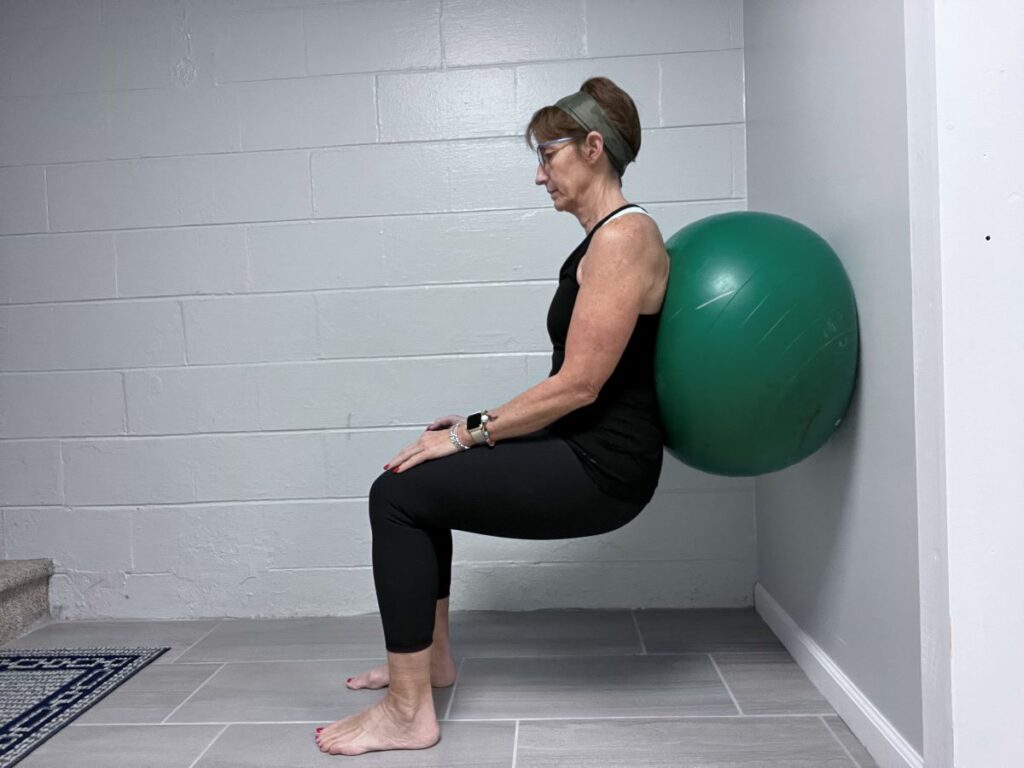
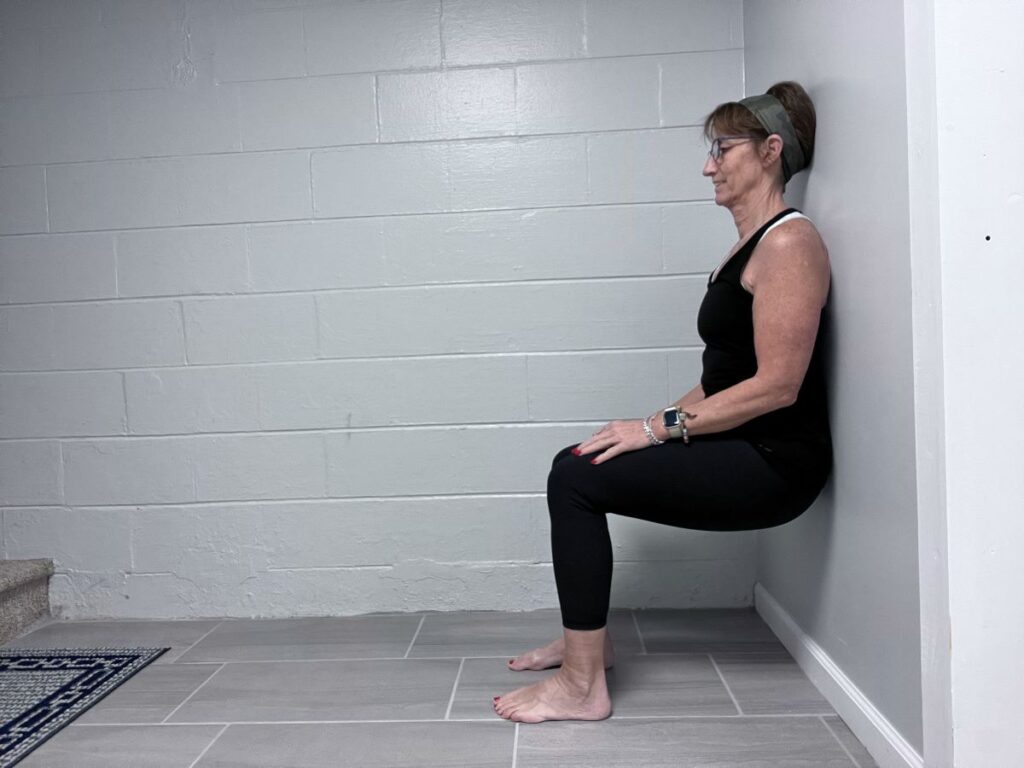
Wall squats can support your back, and you can increase the depth of the squat with time and patience.
If you’re doing wall squats, try to stay in the squat for 20-30 seconds.
You can also place a weight on your legs as you advance to add more spice to your wall squat.
Lunges
Lunges are another great exercise for strengthening your legs.
Again, depending on your fitness level or limitations, you can do this exercise with just body weight or free weights.
Resistance bands are also an option.
To do a lunge:
- Start in a standing position with feet shoulder-width apart
- Step forward with your right foot. You could also step backwards if you prefer, this can tend to be a little friendlier on the ol’ knees.
- Lower your body by bending the front and back knee while keeping your back straight.
- Bend knees to 90-degree angle or as low as possible, then push back on your front heel.
- Return to the starting position.
- Repeat with the left leg or do the same leg ten times and switch to the other leg.
If you need to modify your lunges, this article may be helpful: Best Modified Lunges for Seniors: Easy Exercises to Stay Active
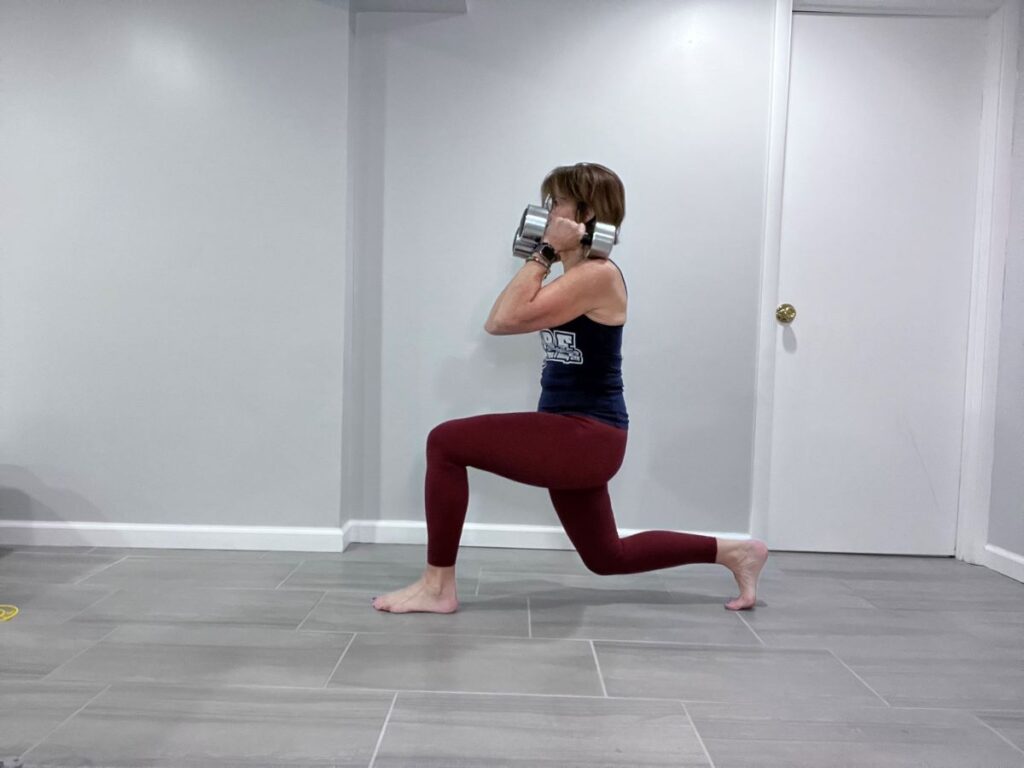
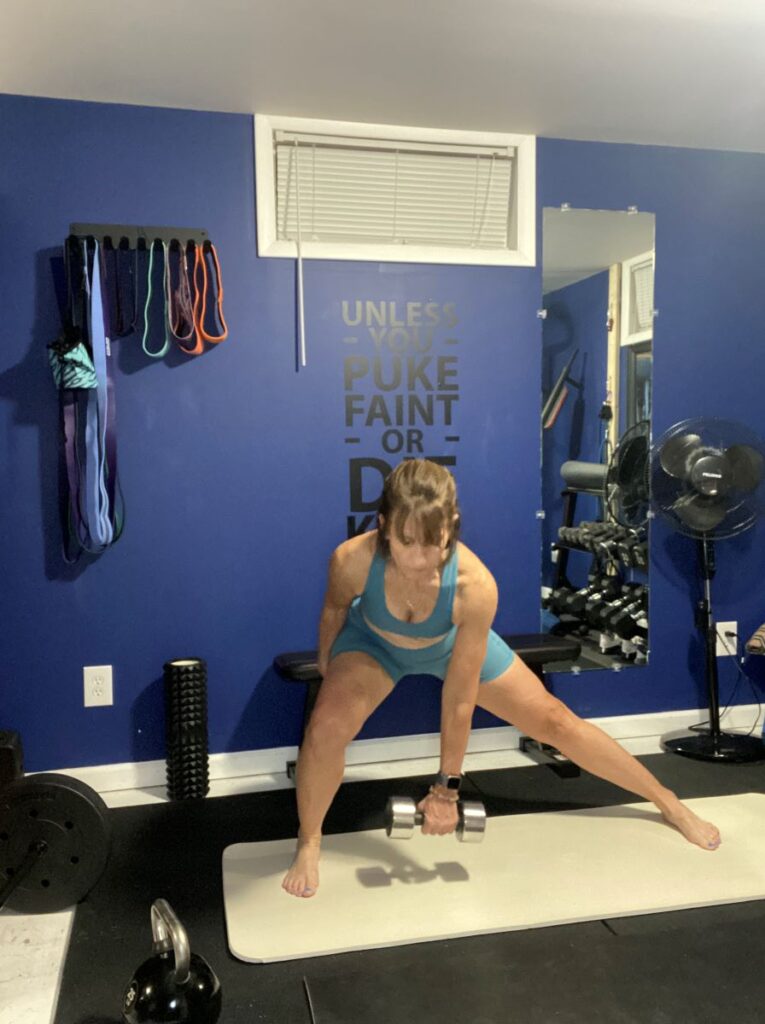
Clamshells
This exercise will help with your hip flexors, abductors, and adductors.
You can do this one with just body weight at first or you can add a resistance band above the knees.
To do clamshells:
- If you’re using a mini band or booty band, place the band above the knees – never place the band on your knees.
- Start by lying on your left side with your knees at 45 degrees.
- Lift the right leg and hold for a few seconds.
- Then, lower the knee.
- Repeat this 10 times.
- Then, switch to the right side, lifting the left leg.
This is a safe exercise for your knees and ankles if if you use the proper technique.
It was one of the first exercises my therapist started after my knee replacement.
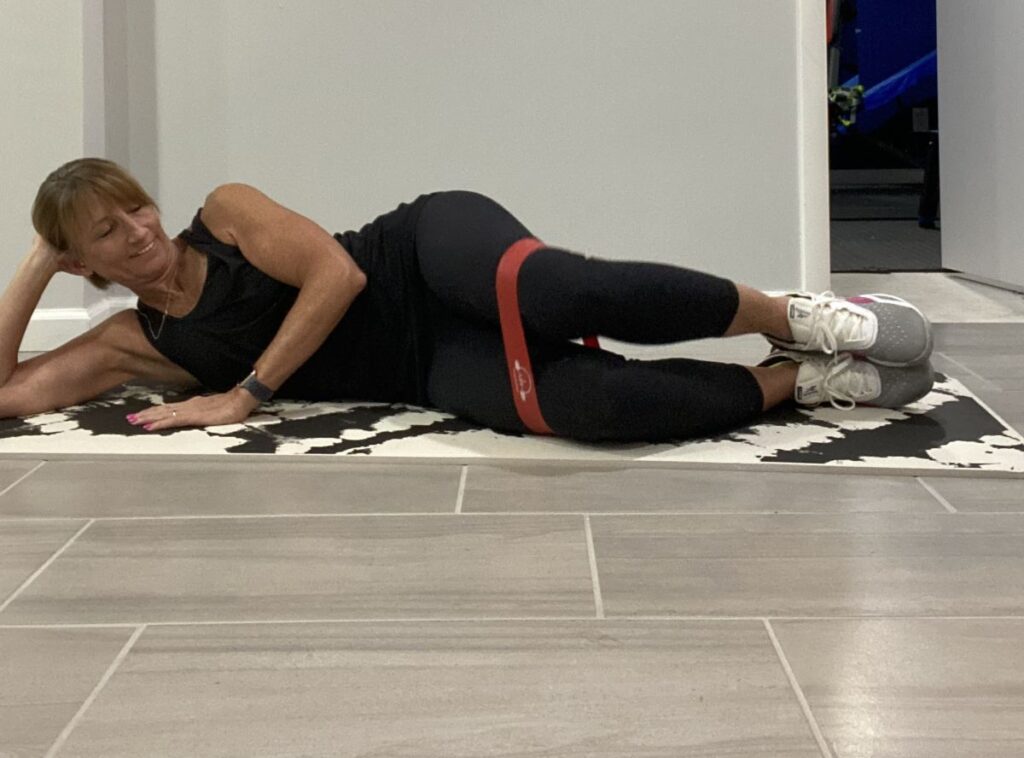
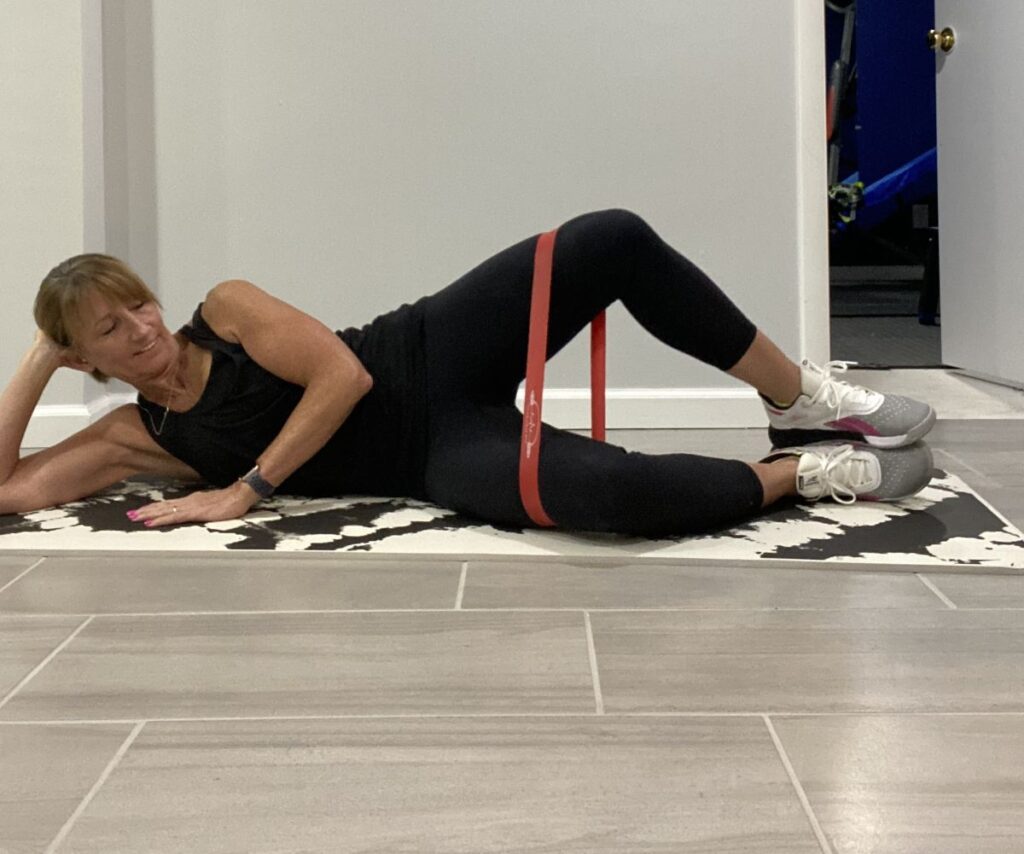
Romanian Deadlift
Romanian deadlifts are a classic exercise that works your legs, back and core.
You can do this as a single-leg exercise or a bilateral leg exercise. A single leg is better if you’re looking to improve your balance.
If you are just starting out, you may want to try this with just body weight until you get the form down.
Then you can add a lighter weight and increase to heavier weights as you become stronger.
To do a deadlift:
- Stand with your feet shoulder-width apart, holding a barbell or a dumbbell in each hand.
- Bend your knees slightly and push your hips back as you slowly bend forward, keeping your shoulders back and your back straight.
- Then keep your butt tight as you stand back up.
- Don’t hyperextend at the top, keep back straight. This will only aggravate your lower back.
- Then, lower back down.
- Repeat for 10-15 reps.
You can also be done as a single-leg deadlift by lifting one leg behind you as you lower the weights in front of you.
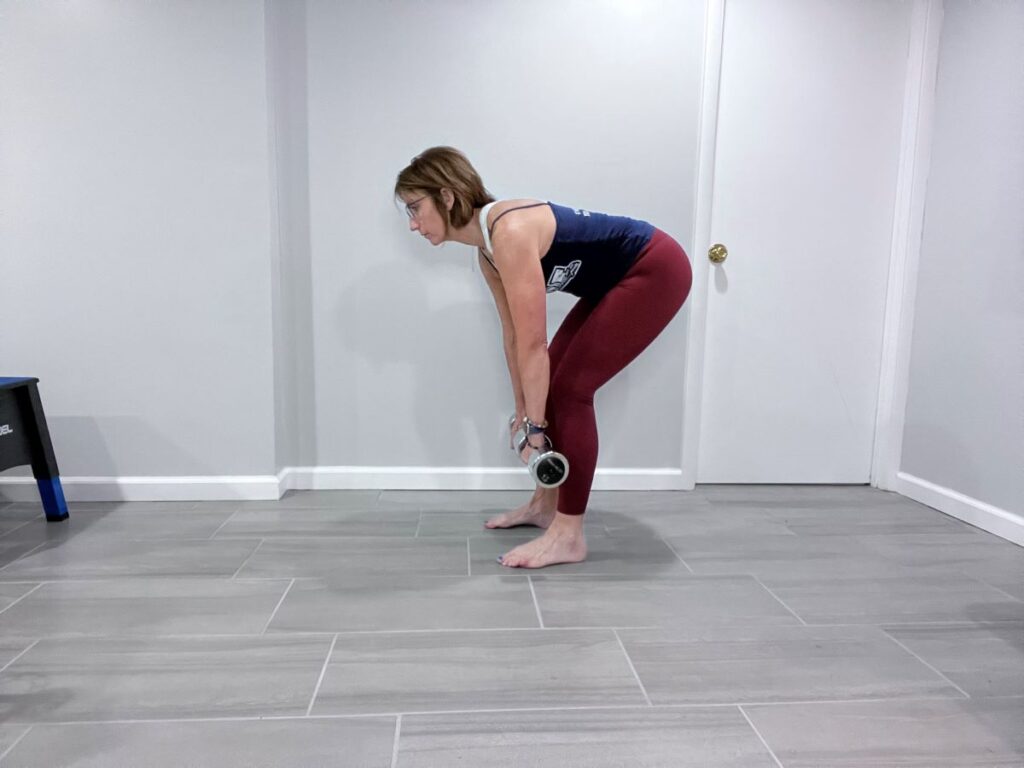
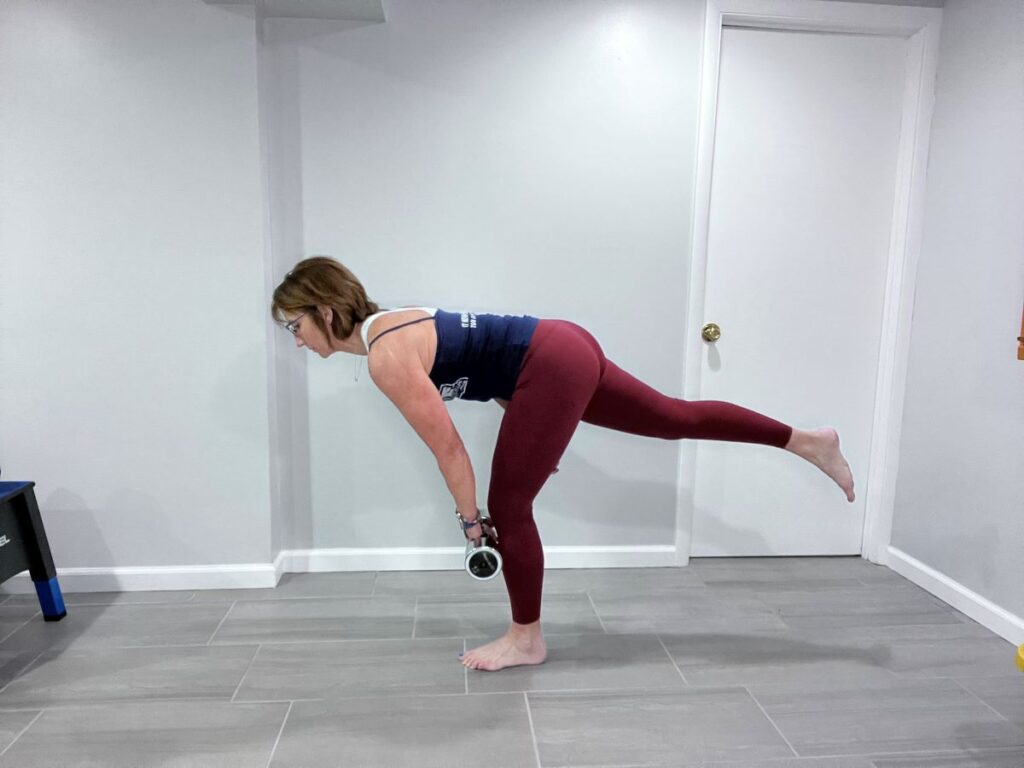
Calf Raises
Calf raises are a simple exercise that can help you build stronger calf muscles.
However, if you haven’t done calf work for a while, be careful.
It may not feel like you’re doing much, but your calves can bark at you for several days after you work them. So, start slow and work up.
To do a calf raise:
- Stand with your feet shoulder-width apart and lift your heels off the ground.
- You can add free weights or ankle weights to this one for more resistance.
- Lower your heels back down, then repeat for several reps.
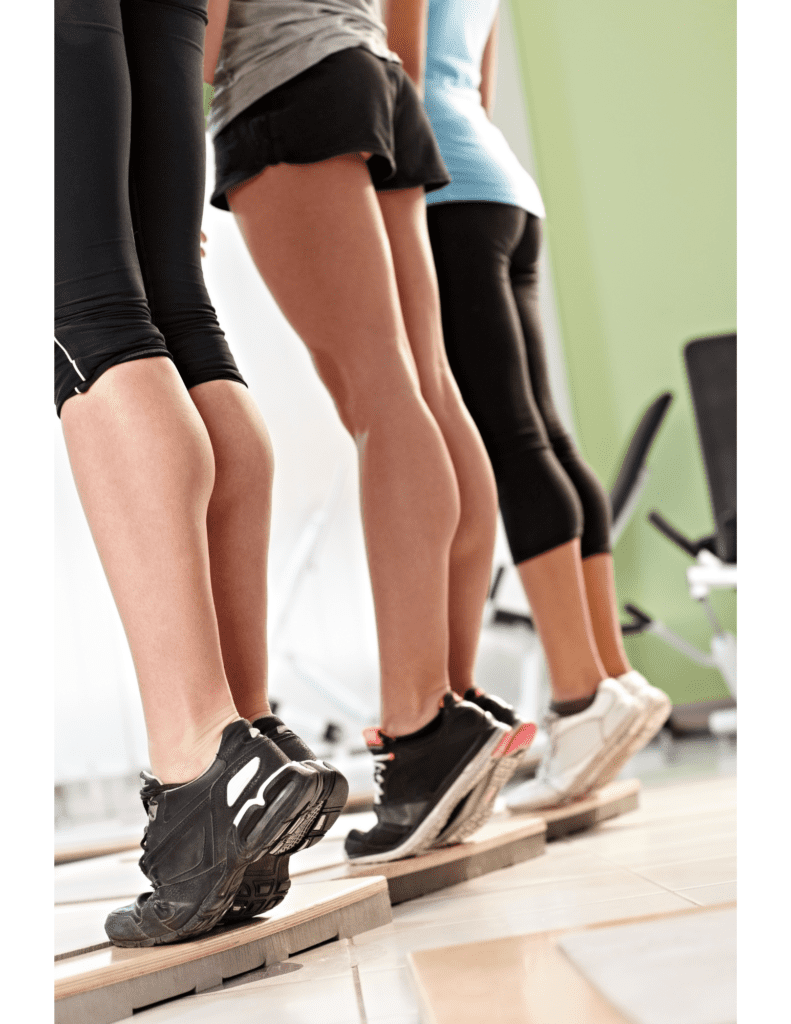
Several other exercises, such as step-ups and lateral walks, may be a little more advanced.
If you really want a challenge, try some jump roping or box jumps.
Again, do whatever works for you, your fitness level, and your physical limitations.
Just remember to focus on proper form and balance.
Cycling-Specific Workouts to Improve Leg Strength
Here are some cycling-specific workouts that you can do on your bike:
Sprinting
Sprinting is a great way to build leg strength and improve your speed on the bike.
Start by finding a flat surface of road or hop on a stationary bike and sprint for 10-30 seconds at a time. Rest for 1-2 minutes between sprints and repeat for 5-10 sets.
You can also do hill sprints to build more force and power in your legs.
Indoor Cycling
If you’re not ready to train with your bike on the road, take your routine indoors on a stationary bike instead.
It’s a great way to work on your pedal stroke and build leg strength in a controlled environment.
You can use a stationary bike or a smart trainer with virtual cycling apps like Zwift or TrainerRoad to simulate outdoor rides and do specific workouts that target your legs.
These apps offer a variety of workouts, including hill climbs, intervals, and sprints, that can help you improve your leg strength and performance.
Pedal Stroke Drills
Pedal stroke drills can help you improve your efficiency and leg power on the bike.
One is the single-leg drill, in which you pedal with one foot for 30-60 seconds and then repeat with opposite leg.
This drill helps you focus on the upstroke and downstroke of your pedal stroke and can improve your overall efficiency.
Another drill is the high cadence drill, this is where you pedal at a high speed (90-110 RPM) for 5-10 minutes at a time.
This drill helps you improve your leg speed and endurance.
Remember to start slowly and gradually increase the intensity and duration of your workouts to avoid injury.
Additional Tips for Stronger Legs for Cycling
Core Strength
Do not underestimate the importance of strengthening your core muscles.
A strong core helps with balance and stability of your upper and lower limbs.
Planks, Russian twists, and bicycle crunches are some of my favorite exercises.
You will also need to do upper body exercises, like renegade row, Arnold press, and push-ups.
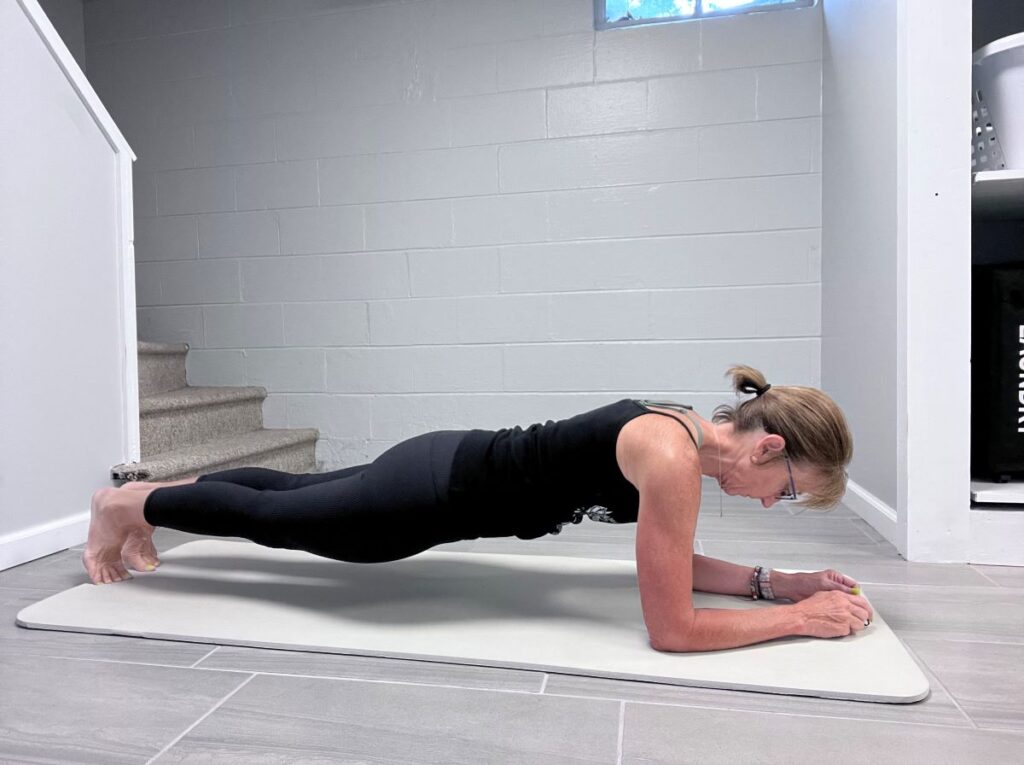
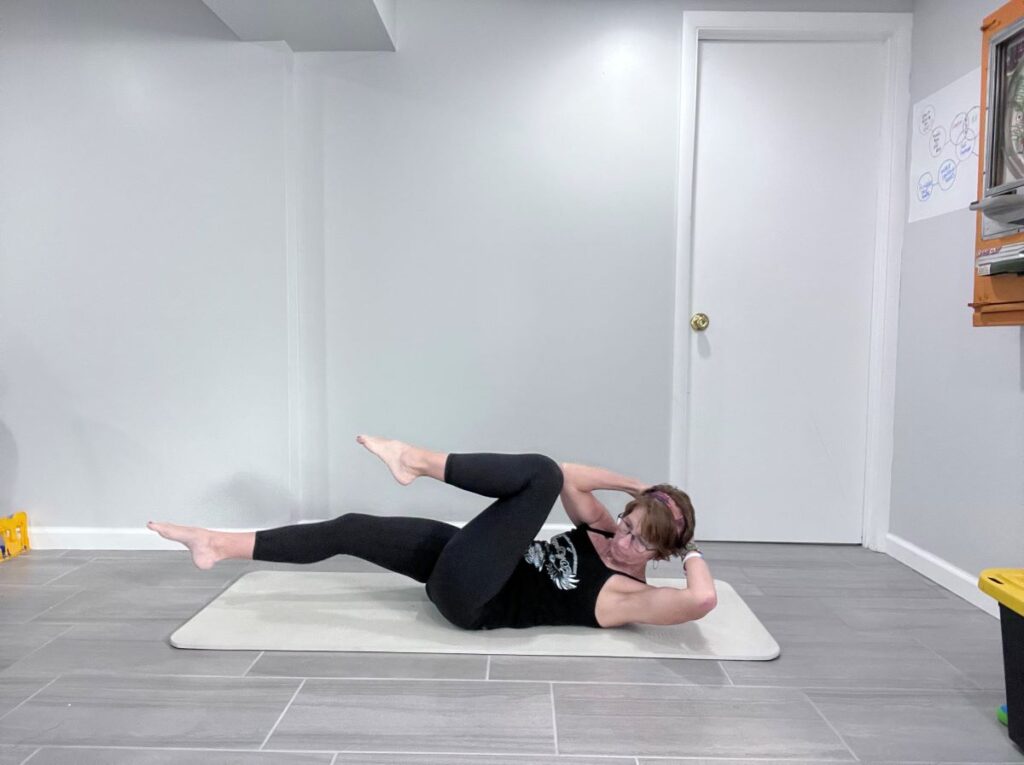
Read More: 11 Of the Best Core Exercises for Older Adults: How to be a Stronger, Healthier You
Rest and Recovery
You are pushing yourself to the limit during training sessions to strengthen your legs, so it’s very important to add rest and recovery days to your routine.
This will help you perform at your best.
During rest days, your body refuels and replenishes.
This helps boost your energy levels and improve your endurance, making it easier to push yourself harder during your next training session.
Recovery is also key to achieving optimal performance.
Your recovery days should include stretching or foam rolling.
These activities help increase blood flow to your muscles, which can speed up the recovery process and reduce the risk of injury.
READ MORE: Recovery Ride Vs Rest Day? For New Senior Riders | Simply Aging Healthy
Nutrition for Building Stronger Legs
When building stronger legs for cycling, nutrition plays a crucial role.
It’s important to maintain a balanced diet that includes a variety of foods such as lean protein, whole grains, and healthy fats.
You also need to consume enough calories to fuel your rides and build muscle.
Water intake is also important to stay hydrated.
Drink plenty of water throughout the day – not just while training – to stay hydrated.
READ MORE: Reasons Why Pre And Post Workout Nutrition Is Important | Simply Aging Healthy
Building Stronger Legs
It’s important to adopt a comprehensive approach that combines on-bike training and off-bike exercises to build stronger legs for cycling.
On-bike training should focus on both endurance and intensity, utilizing long rides to build stamina and interval training to increase power.
Off-bike exercises should target the key muscle groups used in cycling, such as the quadriceps, hamstrings, glutes, and calves.
Good nutrition and recovery are also important to ensure your muscles repair and grow stronger.
Consistency is key to improving your leg strength for better cycling performance and a reduced risk of injury.
Remember to listen to your body and adjust your training as needed.
Are you working on strengthening your legs? If so, let me know which approach you are using!

Thanks for the info, I am a 75 year old male and need all the info to get me stronger on the bike. I have joined a group that cycles 3x per week +- 60 km at present ave speed 24/25 km/h.
That is awesome! There is nothing better than getting out and riding especially with a group who helps to support you!
Stay strong and keep pushing!